Hall of Fame athletes, coaches and broadcasters were among the many people we lost in 2022. Here are some of the biggest deaths in the sports world this year and why they mattered, in chronological order.
Originally an undrafted free-agent, Dan Reeves went on to have a 38-year career in the NFL. He spent eight seasons as a player with the Dallas Cowboys, racking up nearly 2,000 rushing yards and over 1,600 receiving yards and scoring 42 touchdowns. After his playing career, Reeves became a coach. He spent 23 years as a head coach, leading the Broncos to three Super Bowl appearances and taking the Falcons to the big game once.
You might know about a guy named Joe Namath leading the New York Jets to a Super Bowl title, but they never would have gotten there without Don Maynard and his incredible catch in the 1968 AFL Championship Game. It says something that Maynard last played for New York in 1972 and still remains the team’s all-time leading receiver. He was the first NFL player to ever eclipse 10,000 receiving yards, retiring as the league’s leading receiver.
A true pioneer, Lusia Harris was the only woman to be officially drafted by an NBA team, the Utah Jazz, though she decided not to go. She scored the first Olympic points in women’s basketball history and was the first Black woman inducted into the Basketball Hall of Fame in 1992. Harris spoke about her career in an Oscar-nominated documentary titled “The Queen of Basketball.” She was 66.
Mostly known as the younger brother of former MVP Jason Giambi, Jeremy held his own as a hitter and was one of the bigger bats on the 2002 Oakland Athletics, famously chronicled in “Moneyball,” before a midseason trade. Unfortunately, he also admitted to using anabolic steroids like his brother over the course of a six-year MLB career. He died by self-inflicted gunshot wound months after he was struck in the head by a baseball while working as a coach, an injury his family said caused him to act differently.
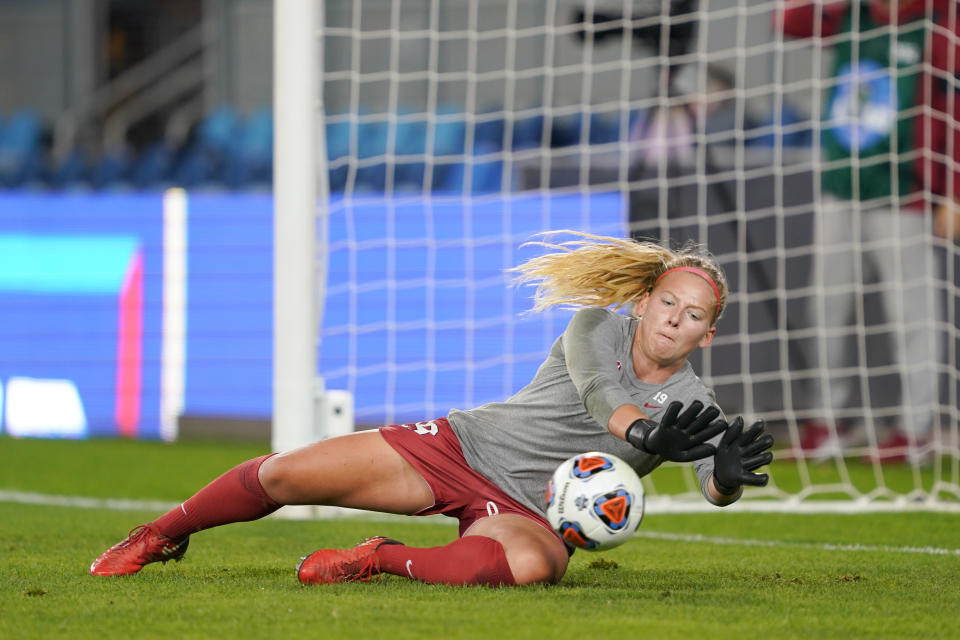

Katie Meyer was a bright star in Stanford soccer. Described by her friends as a “larger-than-life team player in all her pursuits,” Meyer made two critical saves in a penalty shootout against North Carolina to help Stanford win its third NCAA women’s soccer championship in 2019. Her death at 22 made waves across the nation and sparked a larger conversation about mental health for student athletes, with the circumstances eventually leading to her parents suing Stanford.
If you are unfamiliar with Scott Hall, perhaps you know him by his in-ring alter-ego, Razor Ramon. Hall delighted wresting fans in the ’90s, becoming one of the sport’s most popular personalities. Hall starred in both WWE — then known as WWF — and WCW, where he helped form the NWO with Kevin Nash and Hulk Hogan. Away from the ring, Hall dealt with substance abuse and was arrested multiple times, including once for second-degree murder and once for domestic violence. Both charges were eventually dropped. Hall died in March due to complications from hip surgery. He was 63.
Throughout the late ’90s and early ’00s, it was hard to turn on SportsCenter or any of ESPN’s NFL shows without seeing John Clayton. A consummate professional, Clayton got his start as a Pittsburgh Steelers reporter. He earned the team’s ire when he uncovered a rules violation that cost the team a draft pick, and eventually worked his way over to ESPN in 1995. There, he was a fixture of the growing network’s NFL coverage and beloved by fans and reporters across the industry.
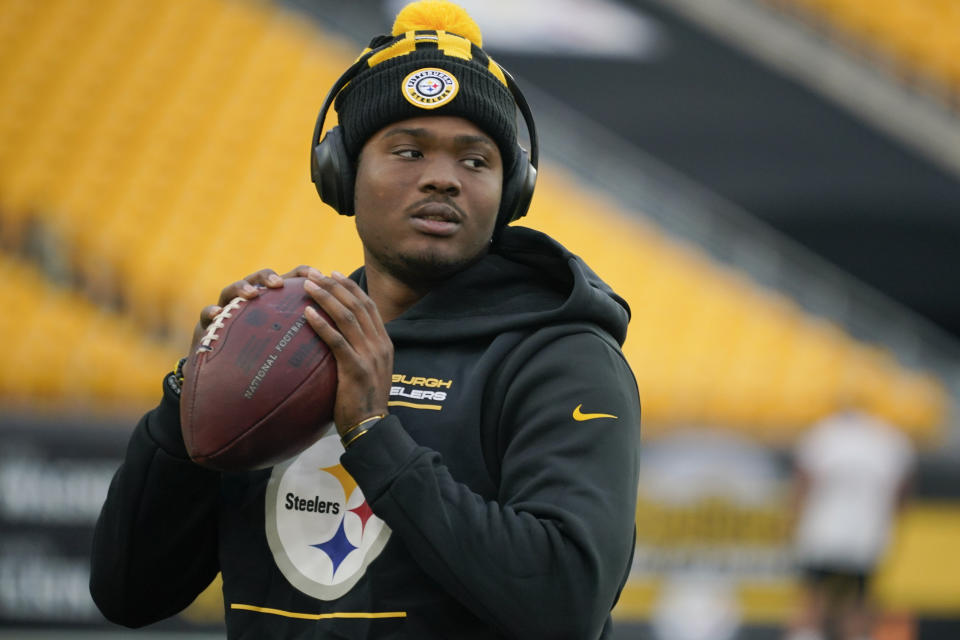

Dwayne Haskins’ career held great promise after a 50-touchdown season at Ohio State that led to him being drafted 15th overall in the 2019 NFL draft, but his first few seasons in Washington were defined by struggles and friction. He ultimately landed as a back-up for the Pittsburgh Steelers, and might have received a chance to re-establish himself had he not been fatally struck by a truck on a highway in Florida. Testing later found him to have ketamine and norketamine in his system, as well as a .24 BAC.
Do you know the last team to win four consecutive championships in the NFL, NBA, NHL or MLB? It was Mike Bossy’s New York Islanders. The NHL’s all-time leader in goals scored per game and a three-time winner of the league’s sportsmanship trophy, Bossy posted nine consecutive 50-goal seasons to open his career, a feat not even Wayne Gretzky nor Alexander Ovechkin matched. His run with the Islanders reached incredible heights, but was tragically cut short at the age of 30 due to a back condition. He remained active as a broadcaster all the way up to his death by lung cancer at the age of 65.
Guy Lafleur was one of the greatest hockey players ever, and he reached that status with style. “Le Démon Blond” won five Stanley Cups for the Montreal Canadiens and remains the franchise’s all-time leader in points and assists. After being selected first overall in the 1971 NHL draft, Lafleur took a while to enter hockey’s class of elites, but he was a sight once he got there, powering a dynasty with six straight 50-goal, 100-point seasons. He retired in 1985 amid a dispute with Canadiens management, but returned for three more seasons in 1988.
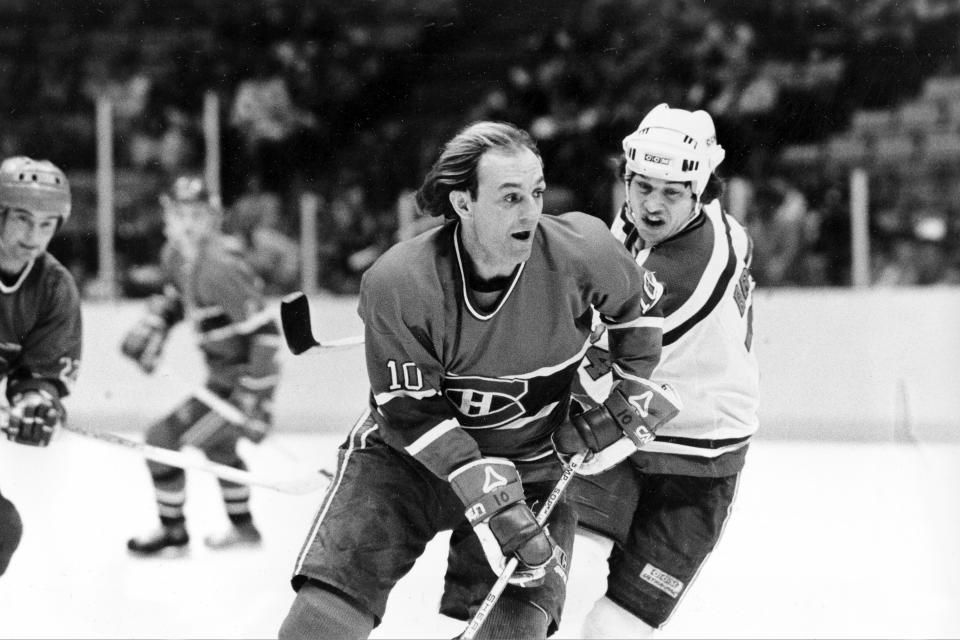

One of the great centers in early NBA history, Bob Lanier recovered from a knee injury that ended his college career to become a perennial All-Star with the Detroit Pistons alongside Dave Bing. He eventually finished his career alongside Kareem Abdul-Jabbar on the Milwaukee Bucks, then went on to a distinguished career as a global ambassador for the NBA for more than 30 years. NBA commissioner Adam Silver called Lanier “one of the kindest and most genuine people I have ever been around.”
Roger Angell started writing baseball in his 40s. He more than made up for the late start. Often called the “Poet Laureate of Baseball,” Angell delivered some of the sport’s greatest articles, paragraphs and sentences during a career spanning decades with The New Yorker. He was there for some of MLB’s biggest moments and found gold in some of its smallest. He was a writer who truly loved baseball, and the only way we can really recommend to understand the immensity of his talent is to simply read what he put into the world.
Marion Barber was a very solid running back during his time in the NFL, and he shined during his six-year stint with the Cowboys. The former Minnesota standout thrived alongside Julius Jones under quarterback Tony Romo in Dallas, where his downhill running style led him to a Pro Bowl appearance in 2007 after racking up more than 1,200 yards from scrimmage and 12 touchdowns that year. Though his time in the league was short, Barber was an elite power back who will go down among the best in Cowboys history.
Few players reach the NBA with more obstacles than Caleb Swanigan. The big man grew up moving between homeless shelters and battling obesity, but persevered to become Indiana’s Mr. Basketball, a five-star recruit and a dominant force down low at Purdue. He entered the NBA as a first-round draft pick for the Portland Trail Blazers, but sadly saw his career end after the NBA’s pandemic hiatus in 2020. Two years later, he was determined to have died of natural causes at the age of 25.
Jaylon Ferguson was on track to be a starting linebacker for the Baltimore Ravens this year, but tragedy struck in June when the 26-year-old was found dead. His death was later found to be caused by a combination of cocaine and fentanyl. He held the NCAA career sack record at Louisiana Tech with 45, then played three seasons with the Ravens after being selected in the third round of the 2019 NFL draft.
From his first day as an NFL player to his last day as a media personality, Tony Siracusa’s personality shined through. “Goose” got his first contract with the Indianapolis Colts by selling himself as a backup long snapper, then spent the next decade as a defensive anchor up the middle, peaking with a Super Bowl ring with the Baltimore Ravens. He was arguably the first breakout character of “Hard Knocks” and remained a frequent presence on television and radio in retirement.
Tragedy struck the Oregon football program this summer when rising fifth-year senior Spencer Webb died in a cliff-diving accident. Local authorities determined he had struck his head while going down a sort of natural water slide. A four-star recruit out of Sacramento, Webb accrued 296 receiving yards and four touchdowns in his career in Eugene and was known for his popular TikTok account chronicling his life as a student-athlete.
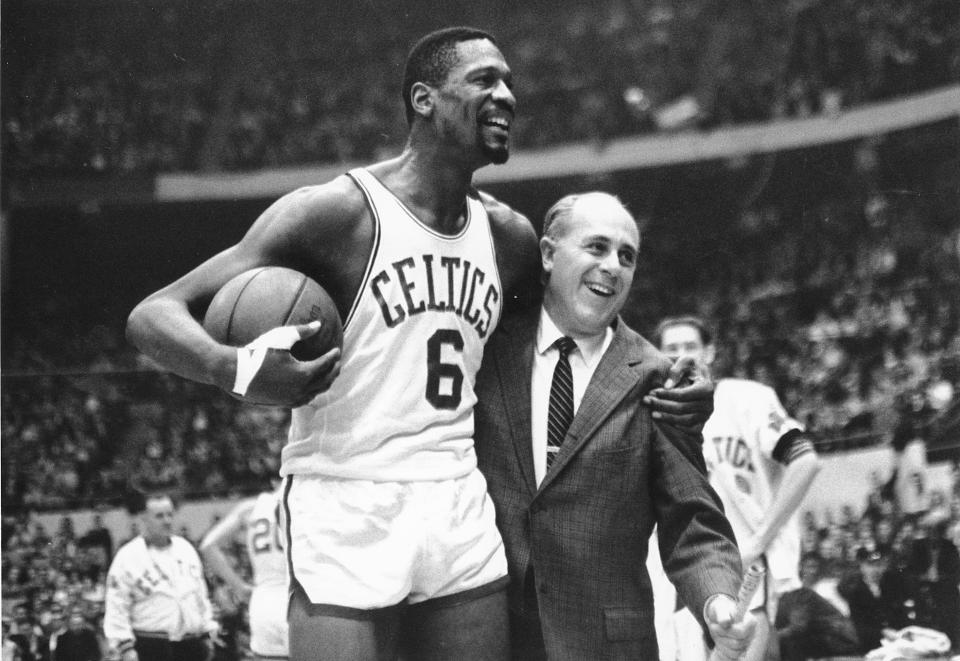

If you care about success during a career, no athlete was better than Bill Russell, winner of 11 rings with the Boston Celtics (plus two NCAA championships and an Olympic gold medal). If you care about Boston, no athlete was better than Bill Russell, the bedrock of the Celtics’ mystique. If you care about social impact during a career, few could match the impact of Bill Russell, the NBA’s first Black head coach and a civil rights icon. Russell’s legacy is intertwined with the advent of modern basketball history, and the sport would be markedly different without him.
Vin Scully was more an alchemist than an announcer. The legendary Los Angeles Dodgers announcer delivered some of baseball’s iconic calls over the course of his 67-year career on the mic, but his greatness was most evident during the dullest moments of a regular-season game. Even in a situation devoid of leverage, Scully’s voice elevated the broadcast with analysis and anecdotes, sometimes on baseball and sometimes not. It’s possible no one in the history of baseball was better at their job.
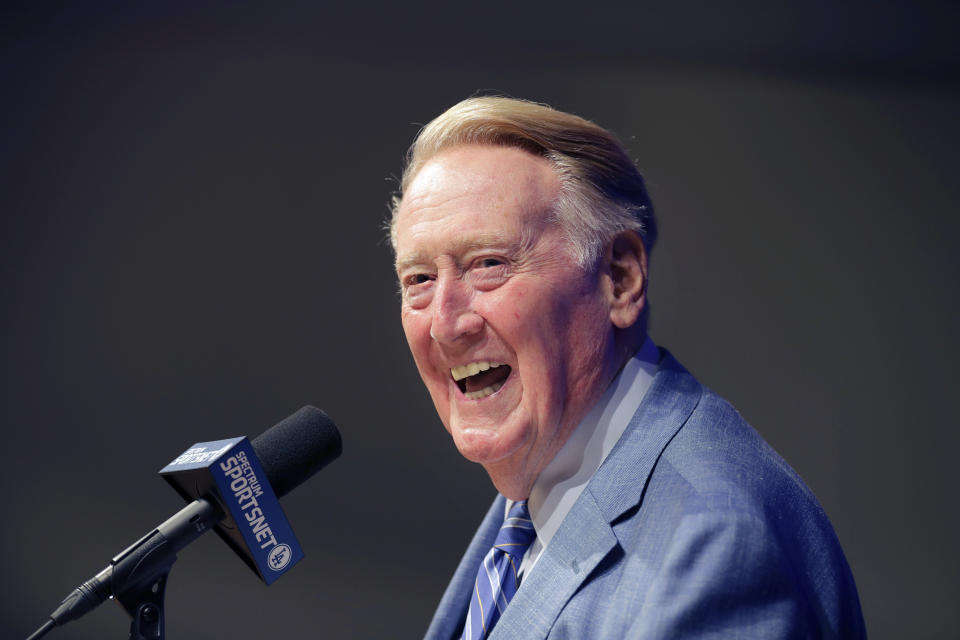

In addition to being a Pro Football Hall of Famer and a Super Bowl winner, Kansas City Chiefs quarterback Len Dawson was also the subject of one of the most iconic photographs in pro football history. The image, which captures Dawson smoking a cigarette during halftime of the first Super Bowl, was shared countless times on social media following Dawson’s death in August. Dawson is known for more than just the photo. He was a seven-time Pro Bowler, two-time All-Pro and was the recipient of the NFL’s Man of the Year award in 1973. He was inducted into the Pro Football Hall of Fame in 1987.
Muhammad Ali fought Joe Frazier, George Foreman and many more hard-hitters in his career. When it was over, he said no one hit him harder than Earnie Shavers. “The Black Destroyer” got 70 of his 76 career wins via knockout, but is most known for his 15-round challenge of Ali that left the champ saying “Earnie hit me so hard, it shook my kinfolk in Africa.” Shavers got a similar reception when he challenged Larry Holmes, who said the punch that dropped him was the hardest he had ever been hit.
Before Lou Brock and Rickey Henderson, there was Maury Wills. The Los Angeles Dodgers shortstop earned seven All-Star nods and an MVP by being a terror on the base paths, stealing a then-MLB record 104 bags in 1962 (his 165 games played that year are also a record). He was a key member of an offense that won three World Series rings during his time in Los Angeles, while also moonlighting as a musician, followed by sporadic work as a coach and commentator.
Gavin Escobar wasn’t the best tight end on the roster throughout his time with the Cowboys. It was hard to do that when a future Hall of Famer like Jason Witten was playing ahead of him. But Escobar was a reliable and steady target every time he took the field — and in everything he did off it. The cancer survivor was working as a firefighter in Southern California when he died in a rock climbing accident earlier this year, an honorable and impactful second act for the former San Diego State star.
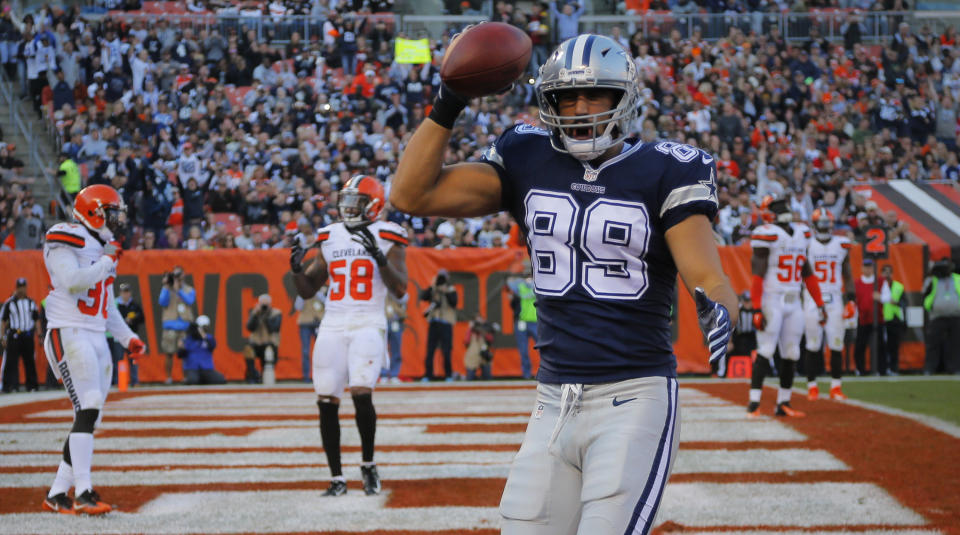

Tiffany Jackson was a Longhorn legend. Check the University of Texas women’s basketball record books, you’ll see her name at the top of multiple categories. Selected by the New York Liberty with the No. 5 pick in the 2007 WNBA draft, Jackson was diagnosed with stage 3 breast cancer in 2015. With her cancer in remission in 2017, she signed with the Los Angeles Sparks for a final season that allowed her to raise awareness for personal health care. After retiring at the age of 32, she was an assistant coach at Texas for two seasons. She was 37.
Known for his devastating splitter, Bruce Sutter was one of the most dominant closers in MLB history. He was a six-time All Star who saved exactly 300 games over his 12-year career. Sutter won the Cy Young award in 1979, when he saved 37 games with the Chicago Cubs. He won a World Series with the St. Louis Cardinals in 1982 and was inducted into the Baseball Hall of Fame in 2006.
There has never been a player in NFL history who could do it all like Charley Trippi. The Pro Football Hall of Famer and Chicago Cardinals great played at quarterback, halfback, defensive back, punter and kick returner during his time as a pro. In his rookie year, he posted the ludicrous stat line of 401 rushing yards, 240 receiving yards, 49 passing yards, 321 kick return yards, 141 punt return yards and 59 interception yards. He was a College Football Hall of Famer as well, and remains one of only four players to have their number retired at Georgia.
When Kirby Smart’s Georgia Bulldogs take the field at the upcoming College Football Playoff, they’ll be wearing a patch in honor of a coach who took them to the promised land. Vince Dooley spent his entire 24-year head coaching career in Athens, accruing a 201-77-10 record, six SEC championships and a national title in the 1980 season. The College Football Hall of Famer retired as the second-winningest coach in SEC history at the time, behind only Bear Bryant, and continued on as Georgia’s athletic director until 2004.
Adam Zimmer made a habit of following his father Mike’s footsteps, all the way into the NFL. He won a Super Bowl ring in his first NFL job out of college as an assistant linebackers coach for the New Orleans Saints and eventually united with his father on the Minnesota Vikings, where he was co-defensive coordinator in 2020 and 2021. Sadly, he was found to have died at the age of 38 due to chronic alcohol abuse.
Los Angeles Rams head coach Sean McVay has a few more rings to win before he catches up to his grandfather. Alongside Hall of Fame coach Bill Walsh, John McVay helped construct a dynasty as vice president and general manager of the San Francisco 49ers. His first assignment in the front office led to the drafting of one Joe Montana, and he also had a hand in picking names like Jerry Rice, Ronnie Lott and Charles Haley. He ultimately retired with five Super Bowl rings.
The trophy for college football’s best punter is named after Ray Guy for a reason. Widely considered the greatest punter of all time, Guy was the first punter to be selected in the first round of the NFL draft, the first punter to be inducted into the Pro Football Hall of Fame, won three Super Bowls with the Raiders and earned six first-team All-Pro honors. And lest you think punters are unathletic, Guy was also a starting safety during his college career at Southern Miss, recording a school-record eight interceptions his senior year, and threw a no-hitter for the school’s baseball team.
Long-time sports broadcaster Fred Hickman had an illustrious television career that spanned decades. Hickman rose to prominence as a member of “Sports Tonight” on CNN. He also worked for ESPN, where he anchored “SportsCenter,” and became the host of “Inside the NBA” before helping get the YES Network off the ground. Most recently, Hickman was an anchor and managing editor at Black News Channel. He was 66.
Few hit harder than Anthony “Rumble” Johnson during his 15-year MMA career, all the way up to when he knocked on the door of the UFC light heavyweight championship. Johnson went 22-6 during his professional career, and his only losses in his final 15 matches were when he challenged Daniel Cormier for the belt. The end of his career, which was marred by domestic violence allegations, saw him open up a CBD oil company, and he ultimately died at 38 years old of non-Hodgkin lymphoma and hemophagocytic lymphohistiocytosis.
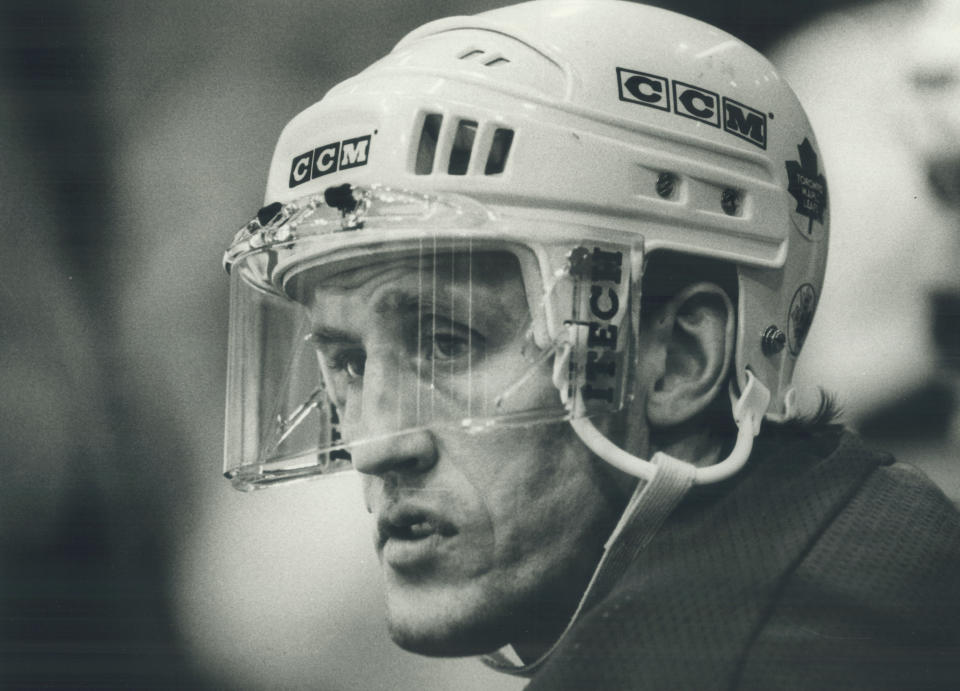

When Börje Salming entered the NHL after his career in the Swedish leagues, European players weren’t expected to be tough and defensemen weren’t expected to post 70 points in a season. Over the next 17 years, Salming did everything he could to change that. A physical, two-way defenseman, Salming remains the Maple Leafs’ all-time leader in assists with 620 and was the first European to be inducted into the Hockey Hall of Fame. His final public appearance came in November, before his death from ALS.
Gaylord Perry was simultaneously one of baseball’s greatest players and one of baseball’s greatest rogues. His numbers and accolades speak for themselves – 314 wins, 3,534 strikeouts, two Cy Young Awards, a no-hitter, the Hall of Fame — but his career was defined by what he put on the ball beside spin. Long before MLB was instituting mandatory ump checks, Perry was putting any substance he could think of on the baseball, to the point his memoir was titled “Me and the Spitter.” He wasn’t popular among his opponents, but he certainly added color to the game.
It isn’t hyperbole to say Nick Bollettieri created the modern structure of elite tennis, for better or worse. The Nick Bollettieri Tennis Academy was novel as a boarding school dedicated to sports and churned out some of the greatest tennis players from the 1980s on, including Andre Agassi, Monica Seles, Jim Courier, Serena Williams and Maria Sharapova. In 1987, 32 of his current or former students made the Wimbledon draw. Around that time, his school was purchased and turned into the IMG Academy, a school you are undoubtedly familiar with if you follow recruiting in just about any college sport.
The story of soccer’s rise in the United States over the past 20 years will be impossible to tell without Wahl’s contributions. After making a risky switch from the college basketball beat to full-time soccer reporter, Wahl was responsible for consistently important journalistic work with SI, Fox Sports, CBS Sports and his own ventures, all the way up until his death from a ruptured aortic aneurysm in Qatar while covering the 2022 World Cup. He also wrote the iconic SI cover story that introduced LeBron James to much of the world.
Known as one of the most tenacious defenders of his era, Paul Silas’ career extended long past his playing days in the NBA. Following his career, where he won two championships with the Celtics, Silas spent over 20 years as a coach in the NBA. He spent two seasons as the head coach for the Cavaliers, where he became LeBron James’ first NBA head coach, then finished out his head coaching career in Charlotte. His son Stephen is currently the head coach of the Houston Rockets.
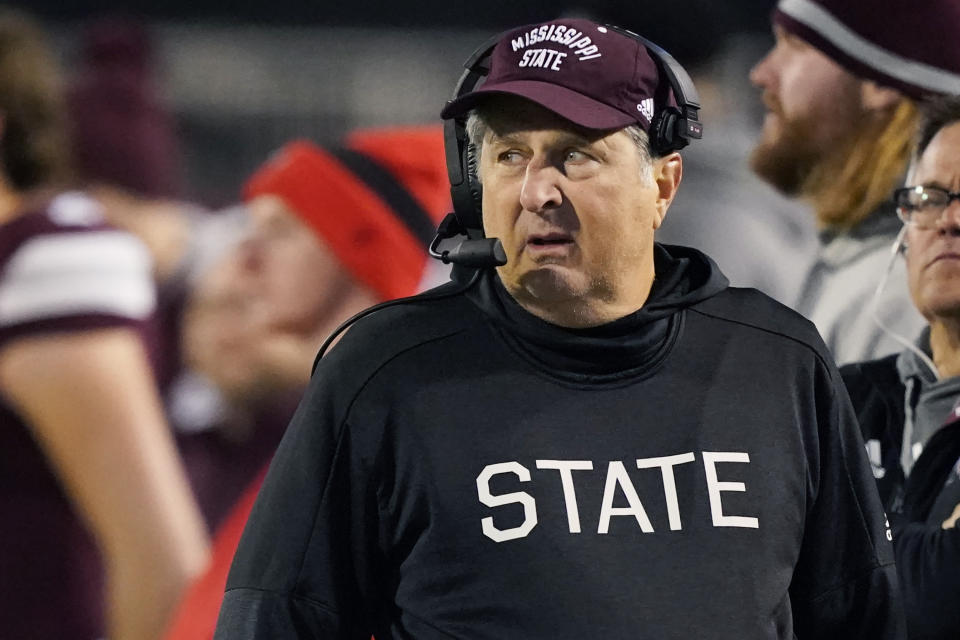

Few coaches helped shape the current state of football, pro or college, more than Mike Leach, whose Air Raid offense was among the top NCAA passing attacks wherever he went. He also made a habit of winning wherever he went. Even more impactful, though, was a personality that led to a torrent of stories and tributes when it was announced he was in critical condition due to a massive heart attack and seizures.
Bille Moore was inducted into the Naismith Memorial Basketball Hall of Fame and the Women’s Basketball Hall of Fame after an exceptional career as a coach. Moore led Cal State Fullerton and UCLA to national titles, becoming the first woman to accomplish that feat. Moore’s prowess as a collegiate coach led to her being named the first head coach of the women’s Olympic basketball team. She helped lead Team USA to a silver medal in 1976.
Syracuse legend Louis Orr was a player during Jim Boehiem’s first year as a coach at Syracuse. Orr scored a career 1,487 points and made the NCAA tournament four straight years at the school. After college, Orr spent eight years in the NBA, mostly with the New York Knicks. He then experienced success as a college coach, winning a conference title with Siena and taking Seton Hall to the NCAA tournament twice.
Franco Harris’ career was much more than the Immaculate Reception, but that legendary play is certainly a great place to start. The Penn State grad was the lead rusher for four Super Bowl-winning teams, posting 1,200 yards from scrimmage in seven of his first eight seasons. He retired third on the NFL’s all-time rushing list. You could say he peaked early by grabbing that ball as rookie, but he certainly had a long time at the top.
Ronnie Hillman was the Denver Broncos’ leading rusher the season they won Super Bowl 50 and ended up seeing action in five NFL seasons with three different teams. A standout in two seasons at San Diego State, Hillman battled for carries in a crowded Denver backfield up until that championship season, then was released the next offseason. One year later, he had played his last NFL game. He was diagnosed with renal medullary carcinoma, a rare form of cancer, in August and was in hospice care by December.
The golfer with the most wins on a single professional tour isn’t Sam Snead. Or Tiger Woods. Or Annika Sorenstam. No, that title belongs to Kathy Whitworth, whose 88 wins in the early decades of the LPGA remains the sport’s high watermark. The Texas native’s tournament wins spanned from 1962 to 1985, winning six majors and becoming the first female golfer to accrue $1 million in winnings along the way.


